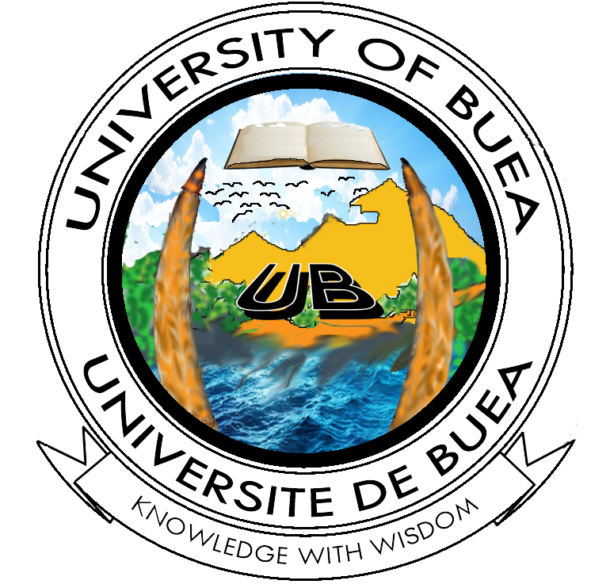| CLT403: Medical Bacteriology and Virology | credits (30-10-20) |
Objectives
This course is designed to outline the different types of bacterial and viral pathogens that can be isolated from different body specimens, the different methods that can be used to identify theses pathogens and basic antimicrobial therapy.
Contents
Introduction to Medical Bacteriology
A. Features and classification of medically important bacteria
• Bacteria (structure, morphology,normal microbial, symbionts, commensals, opportunists)
• Bacteria pathogen and diseases they cause: respiratory, eye, septicaemia, diarrhoe, UTI, etc
B. Microscopic techniques used in microbiology: wet mount, preparation and fixation of bacteriological smears, stains (Gram, auramine phenol, methylene blue, waysons bipolar, acridine orange, giemsa, Albert staining of volutin granules)
C. Culture of bacteriological pathogens: types of culture media, preparation and sterilization, inoculation, incubation
D. Biochemical test used to identify bacteria
E. Bacteriological examination of specimens: skin/wound, sputum, throat and mouth, urogenital, stool, CSF, semen, urine, blood,nasopharyngeal/nasal, eyedischarge.
F. Antimicrobial susceptibility testing: class of antibiotics, tests used to determine inhibitory activity of antibiotics, definition of minimum inhibitory and bactericidal concentration.
Diagnostic Bacteriology
A. Staphylococci and Related Genera: Microbiology, spectrum of disease, Epidemiology, Diagnostic procedures (microscopy, culture techniques, Identification methods, direct antigen or Nucleic acid detection, serologic procedures and interpretation)
• Staphylococcus aureus; Enzymes and toxins produced by S aureus, pathogenicity, laboratory diagnosis, antimicrobial sensitivity
B. Streptococci, Enterococci and Related Genera: Microbiology, Spectrum of diagnosis, Epidemiology, Diagnostic measures-microscopy (culture techniques, identification methods, direct antigen/nucleic acid detection, serologic procedures and interpretation)
• Streptococcus pyogenes; Pathogenicity, Laboratory features; cultures, Chemical test, Lance field grouping, Direct detection of antiA from throat swabs extracts, Measurement of ASO antibody in serum, Measurement of DNase antibody, Antimicrobial sensitivity
C. Neisseria and Branhamella [Moraxella]: Microbiology, pathogenicity, epidemiology, and diagnostic procedures, N. meningitis; pathogenicity, laboratory diagnosis, N. gonorrhea-pathogenicity, laboratory diagnosis
D. Gram Positive Aerobic To Facultative Anaerobic Bacilli: Microbiology, pathogenicity, epidemiology, diagnostic procedure, Corynebacterium diphtheria: -pathogenicity, laboratory features, toxin production and toxigenicity, therapeutic considerations
E. Enterobacteria : Microbiology, Spectrum of diseases, epidemiology, E coli (tribe, genus, and species) –pathogenicity and laboratory diagnosis
• Shigellaspp; pathogenicity, transmission and laboratory features, Salmonella; pathogenicity and laboratory diagnosis
• Klebsiellapneumoniae (pathogenicity and laboratory diagnosis,) Proteus mirabilis (pathogenicity and laboratory)
• Aeromonas and Pleiomonas; microbiology, pathogenicity, epidemiology, diagnostic techniques
• Vibrio: Microbiology, pathogenicity (biotypes, serotypes and toxin production), epidemiology, laboratory feature, distilled H2O motility test differentiate Vibrio and Aeromonas
• Camphylobacter and Helicobacter; microbiology, spectrum of diseases, epidemiology, laboratory features of Camphylobacterspp
• Haemophilus; microbiology, spectrum of diseases, epidemiology, diagnostic techniques; Haemophilus influenza, pathogenicity, laboratory, therapeutic consideration
• Anaerobic Gram Negative Bacilli: Microbiology, spectrum of diseases, epidemiology, and diagnosis (microscopy, cultural techniques, and test for identification of non-fermenters); Bordetella pertussis, pathogenesis, laboratory features, gram staining technique, Brucellaspp; pathogenicity, laboratory features, therapeutic considerations
F. Spirochetes; microbiology, spectrum of diseases, epidemiology, diagnosis, and therapeutic consideration; Treponemapallidium; diseases, pathogenicity, laboratory features, specific and non-specific test, congenital syphilis
G. Borelia, Rickettsia and Chlamydia
Borellia (pathogenicity, clinical manifestations, laboratory features), Rickettsia (pathogenicity, laboratory features); Chlamydia spp; general features, pathogenicity, laboratory features.
H. Mycobacterium: Classification, spectrum of diseases, epidemiology. Diagnostic procedures, therapeutic consideration, overview of Zhiel nelson and Auramine staining techniques
I. Mycoplasma and Ureaplasma; taxonomy, clinical significance of mycoplasmataceae, culture of human mycoplasma from clinical specimens, serological diagnosis, therapeutic considerations
J. Antimicrobial susceptibility, bacterial resistance to antimicrobial agents, disk diffusion and microdilution broth susceptibility testing and interpretation, minimum inhibitory and bactericidal concentration test.
K. Common human viral infections and their routine diagnosis and prevention. The origin and nature of viruses; chemical and physical properties of bacteria, animal and plant viruses; concentration and purification of viruses; general methods of isolation and identification; virus-host interaction using bacteriophage as a model; transmission and symptomatology of viral diseases; prevention and treatment; of important viral infections; interferons production and the interference phenomenon


